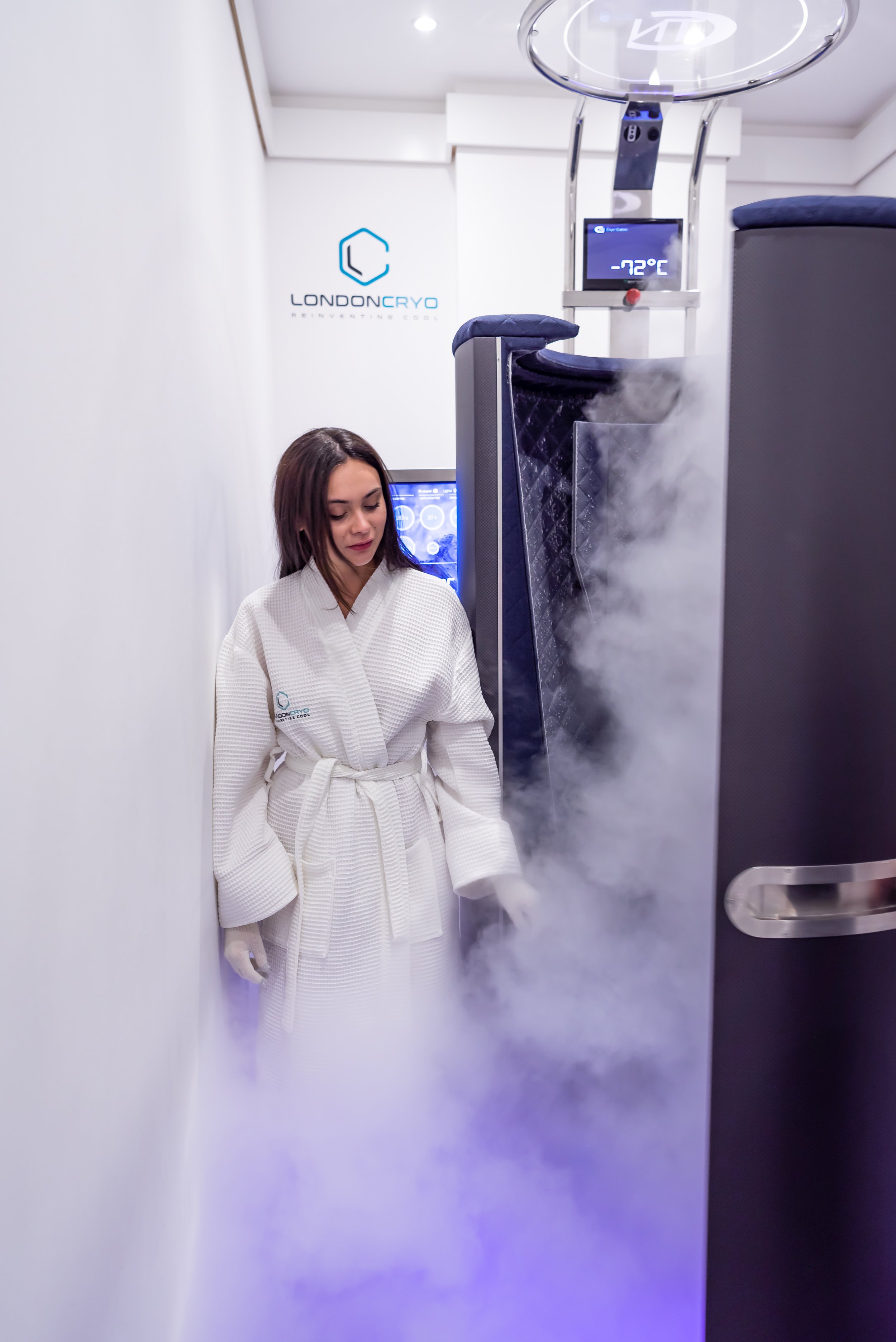The science behind why Whole Body Cryotherapy is superior to a Cold Plunge
In recent years, cryotherapy has gained popularity as a treatment for various health conditions and performance enhancement. Two popular forms of cryotherapy are whole-body cryotherapy (WBC) and cold plunges. While both involve exposure to cold temperatures, they differ significantly in their mechanisms and potential benefits. In this blog post, we will explore why all cold is not equal, and delve into the reasons why whole-body cryotherapy is considered superior to a cold plunge.
Understanding Cryotherapy:
Cryotherapy is a therapeutic technique that involves exposing the body to extremely low temperatures for a short period. The primary goal of cryotherapy is to promote healing, reduce inflammation, and enhance overall well-being. Cold exposure triggers numerous physiological responses within the body, leading to a range of benefits.
Cold Plunge:
A cold plunge typically involves immersing the body in cold water or an ice bath for a short period. The water temperature is typically around 50°F (10°C) or lower. Cold plunges have been used for centuries in traditional medicine and are known to offer some benefits, such as improving circulation, reducing muscle soreness, and providing a temporary energy boost. They are particularly beneficial for acute injuries, localised pain relief, and post-workout recovery.
Whole-Body Cryotherapy (WBC):
Whole-body cryotherapy, on the other hand, involves exposing the entire body to extremely cold temperatures, typically ranging from -200°F to -250°F (-130°C to -150°C) for a duration of two to three minutes. During a WBC session, the individual stands in an enclosed chamber while the temperature is rapidly lowered.
Advantages of Whole-Body Cryotherapy over Cold Plunge:
Temperature Control:
One significant advantage of whole-body cryotherapy is the precise temperature control. Cold plunges often rely on ice or cold water, which can be challenging to regulate consistently. In contrast, WBC chambers are equipped with advanced technology that can maintain a constant and controlled temperature throughout the session. This ensures a more consistent and effective treatment.Efficiency:
Due to the extreme cold temperatures involved, WBC sessions are significantly shorter than cold plunges. While a cold plunge may last for 10-20 minutes, a WBC session typically lasts only two to three minutes. The brief exposure to intense cold in a WBC session can trigger a more potent systemic response in the body, leading to enhanced benefits.Enhanced Circulation:
Whole-body cryotherapy activates the body's natural vasoconstriction and vasodilation responses. When exposed to extreme cold, the blood vessels in the skin and extremities constrict, redirecting blood flow to protect the vital organs. Once the body is rewarmed after the session, the blood vessels dilate, causing a rush of oxygenated blood throughout the body. This process can enhance circulation, promote healing, and reduce inflammation.Reduced Pain and Inflammation:
The proven effects of whole-body cryotherapy on inflammation, which causes most pains, may help live a pain-free life, even in quite severe cases, if the person commits to regular treatments and follows a proper protocol. The extreme cold temperatures in WBC sessions can trigger a release of endorphins, which act as natural painkillers. Additionally, the rapid cooling and rewarming can help reduce inflammation in the body. This effect is particularly beneficial for those recovering from injuries, managing chronic pain, or seeking relief from inflammatory conditions such as arthritis.Mobility and Muscle Recovery:
Since many users of cryotherapy are in sports and physical performance, it is important to mention that Cryotherapy Chambers (LondonCryo CryoCabin’s) do not impact the user's mobility, giving it a considerable advantage over cold water immersion, except for muscle recovery. During the 10 to 20 minutes of typical ice bathing, the cold penetrates quite deep, and the muscles temporarily lose capacity. As muscle tissue needs time to return to normal, the body must rest after an ice bath. In contrast, the extreme cold in the CryoCabin does not affect muscle tissue temperature; it only cools the very surface of the skin. Since the drop in skin temperature is rapid, it creates a powerful illusion that the body is freezing and triggers the discussed earlier rapid response. Only minutes after exiting the extremely cold environment, an athlete can continue to work out or perform.Versatility and Comfort:
While cold water immersion has been used for much longer, whole-body cryotherapy chambers are becoming the go-to solution around the world. They allow for shorter exposure, staying dry, and a much more comfortable overall experience. Also, they have a broader range of applications - not only athletic performance and recovery but also medical purposes, vitality, and beauty. For appearance, some other forms of extreme cold therapy have also been gaining popularity in the last decade, including cryotherapy facials and body contouring relying on cryolipolysis - the destruction of subcutaneous fat cells by lowering their temperature.
While cold in any form can deliver certain performance, health, and wellness benefits, whole-body cryotherapy using extremely cold air has a massive systemic impact on the body. It is more powerful and versatile than cold water immersion or any other application of cold. The rapid cooling of the skin surface leads to a massive thermoregulatory response that has benefits for performance and recovery, various types of pain, physical and mental health, appearance, and longevity. As the wellness world continues to explore the incredible versatility of whole-body cryotherapy, it is clear that this form of cryotherapy offers unique advantages and holds great potential for enhancing well-being and quality of life.

